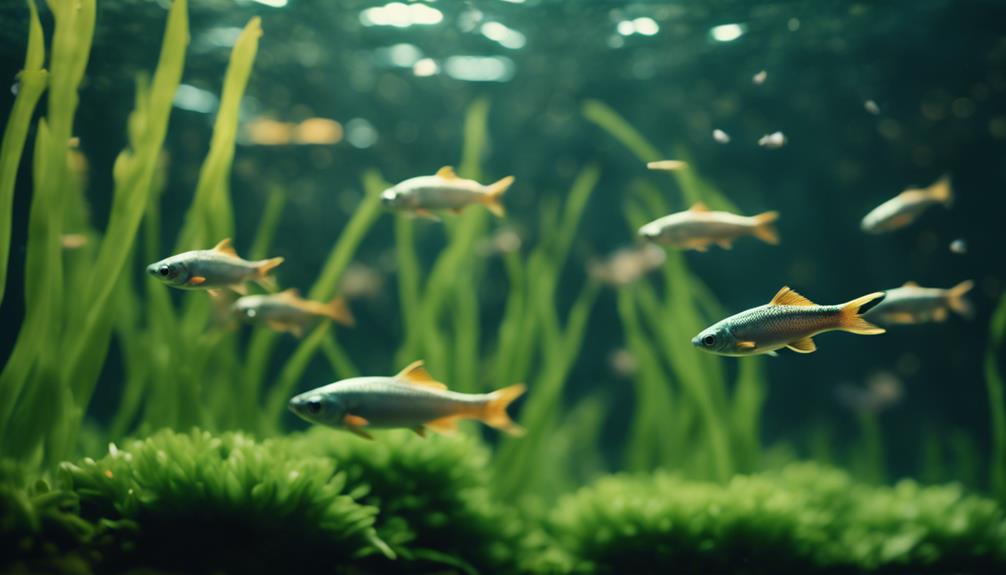By circulating your pond water, you're taking the first step towards a thriving ecosystem and crystal-clear water. Stagnant water leads to toxin buildup, oxygen depletion, and algae overgrowth, harming aquatic life. Proper water circulation distributes oxygen evenly, supporting life and reducing water quality issues. A well-designed circulation system promotes healthy bacteria, necessary for breaking down waste and toxins. To achieve this, you'll need to select the right pump, design an effective circulation system, and consider additional pumps or aeration devices. Now, take the next step towards a balanced ecosystem and discover the secrets to maintaining a healthy, vibrant pond.
Table of Contents
Key Takeaways
- Proper water circulation distributes oxygen evenly, supporting aquatic life and reducing stagnation.
- A minimum flow rate of 380 liters per hour is recommended for good water quality and clear water.
- Effective circulation systems promote clear water and a thriving ecosystem by removing waste and excess nutrients.
- Biological filtration, which can process up to 380 liters of water per hour, achieves up to 95% removal of ammonia and nitrite.
- Regular maintenance of the circulation system and biological filter is key to maintaining a healthy and clear pond.
Understanding Pond Water Circulation
Circulating water throughout your pond is essential, as stagnation can lead to a buildup of toxins and deplete oxygen levels, ultimately harming aquatic life.
You want to create an environment where your fish and plants thrive, and proper water circulation is key.
When water circulates, it helps to distribute oxygen evenly throughout the pond, ensuring that all areas receive the necessary amount to support life.
Stagnant water, on the other hand, can lead to an overgrowth of algae, which can further deplete oxygen levels.
By promoting water circulation, you'll reduce the risk of water quality issues and maintain a healthy balance of oxygen levels.
This, in turn, will create a more stable and thriving ecosystem for your pond's inhabitants.
Importance of Proper Water Flow
In a thriving pond ecosystem, every 30 minutes, your pond's entire volume of water should pass through a filter or other treatment system to maintain healthy water quality. This maintains that your pond's water is constantly being cleaned and purified, creating a healthy environment for your aquatic life.
Proper water flow is vital for several reasons:
Prevents stagnation: Stagnant water can lead to a buildup of toxins and algae, harming your fish and other aquatic life.
Increases oxygen levels: Water agitation helps to increase oxygen levels, which is essential for the survival of your fish and other aquatic organisms.
Reduces algae growth: Proper water flow prevents algae from growing and spreading, keeping your pond water clear and clean.
Maintains healthy bacteria: Water flow helps to maintain a balance of healthy bacteria in your pond, which is necessary for breaking down waste and toxins.
Designing an Effective Circulation System
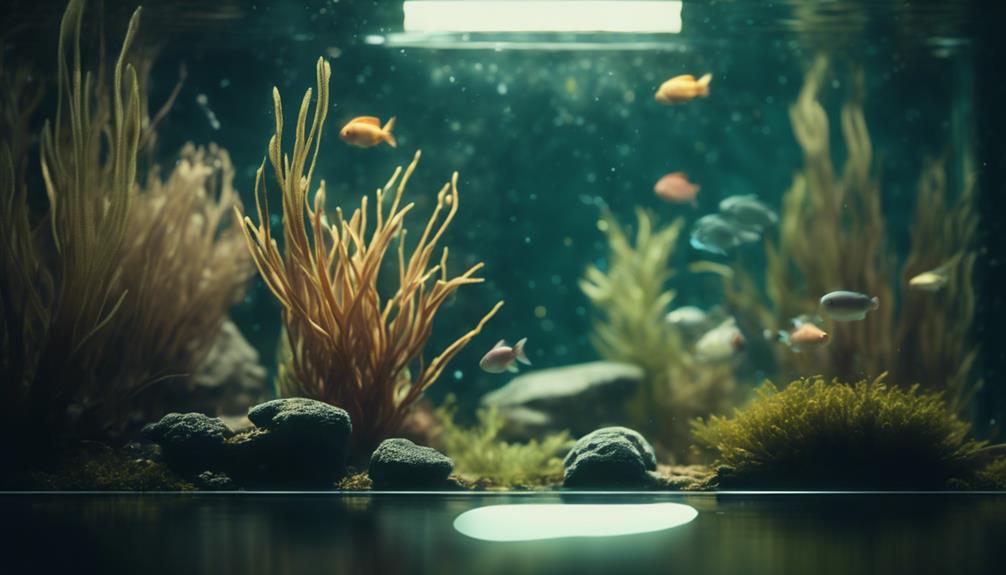
When designing an effective circulation system, you'll need to think about several key factors to guarantee ideal water flow.
You'll want to select the right pump for your system, taking into account criteria such as flow rate, head pressure, and energy efficiency.
Additionally, you'll need to determine the correct system size and layout to create beneficial water flow patterns that promote clearer water.
Pump Selection Criteria
To maintain your pond's water quality, you'll need to select a pump that can handle the unique demands of your pond's size and depth.
The right pump will facilitate proper water circulation, which is vital for healthy aquatic life and clear water.
Choose a pump that can move the total volume of pond water at least once every hour, with a minimum flow rate of 380 liters per hour recommended for good water quality.
Place the pump on the opposite side of the pond from the waterfall it feeds to promote effective circulation.
Select a pump that suits your pond's specific needs, such as a submersible pump for smaller ponds or an external pump for larger ponds.
Consider adding additional pumps or aeration devices to improve circulation and oxygenation.
System Sizing Considerations
Designing an effective circulation system requires careful consideration of your pond's size and depth to guarantee the right pump and piping configuration for maximum water movement and filtration.
As a general rule, aim for a minimum of 100-200 gallons of pond water per foot of pump output to facilitate proper circulation. Additionally, targeting a flow rate of 380 liters per hour can help achieve good water quality, but this may vary depending on the specific needs and size of your pond.
When designing your circulation system, consider the placement of the pump on the opposite side of the pond from the waterfall it feeds. This guarantees complete circulation and prevents stagnant areas that can contribute to algae growth.
If you have a larger pond or complex water features, you may need to add additional pumps or aeration devices to improve circulation and oxygenation. Remember, the size and depth of your pond should guide your pump selection and circulation system design.
Water Flow Patterns
By carefully designing a circulation system that removes water from one side of the pond, circulates it through a biological filter, and returns it to the opposite end, you can maintain constant water motion and filtration. This setup promotes that your pond's water flow pattern is optimized for clarity and health.
To achieve this, you can use a skimmer to pull water in, while a pump pushes water from the other side, creating a flow pattern that removes old, dirty water and returns clean water to the pond.
Some key considerations to keep in mind when designing your circulation system:
Remove dead zones: Add jets to push water into the center of the pond, where the main current takes it to the skimmer.
Use gravity to your advantage: Return filtered water to the pond using gravity, providing an efficient and effective way to maintain excellent water quality.
Size your pump correctly: A 380 liters per hour pump can achieve good water quality, and a bog filter can house beneficial bacteria and microorganisms to support a healthy ecosystem.
Biological filtration is key: Incorporate a biological filter into your circulation system to remove waste and excess nutrients, thereby supporting a balanced and thriving pond ecosystem.
Choosing the Right Pump Size
You'll need to calculate the total dynamic head (TDH) of your pool's plumbing system to determine the right pump size for your specific setup. This calculation takes into account the resistance in your pipes, fittings, and valves, as well as the height of your water features, such as waterfalls or fountains. A larger pump may be needed to overcome these resistances and provide adequate water flow.
| Pump Size | Recommended Use |
|---|---|
| Small (0.5-1 HP) | Small pools (<10,000 gallons) with minimal aeration devices |
| Medium (1-2 HP) | Medium-sized pools (10,000-20,000 gallons) with standard aeration devices |
| Large (2-3 HP) | Large pools (>20,000 gallons) with extensive aeration devices or water features |
Keep in mind that an undersized pump can lead to inadequate water circulation, while an oversized pump can waste energy and increase your utility bills. By choosing the right pump size, you'll be able to maintain crystal-clear water and ensure your pool equipment operates efficiently.
Benefits of Biological Filtration
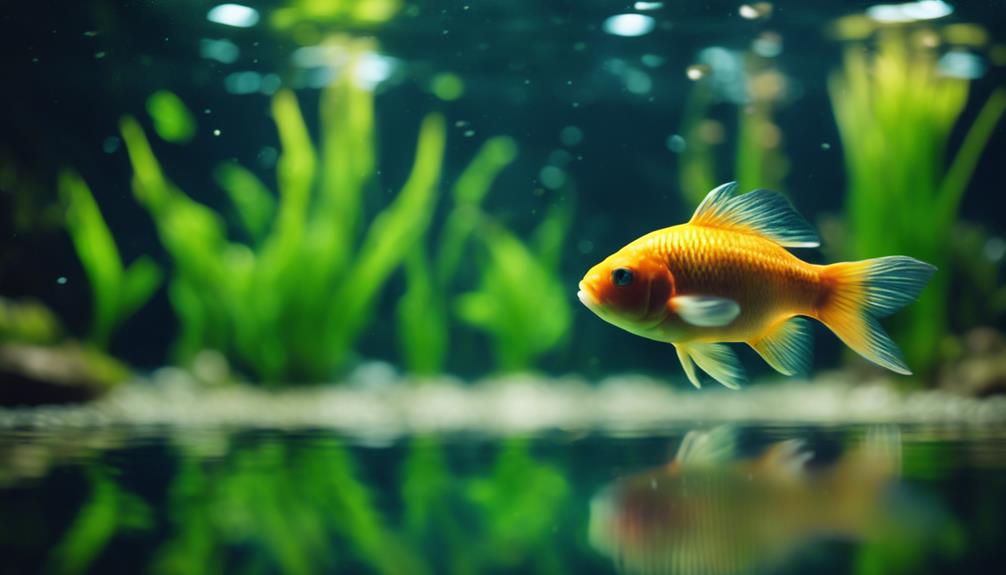
As you explore the benefits of biological filtration, you'll discover three key advantages that will revolutionize your water maintenance routine.
By incorporating a biological filter, you'll experience natural nitrogen removal, allowing you to maintain a healthy balance of nutrients in your water.
This, in turn, enables healthy bacteria to thrive, ultimately resulting in crystal clear water that's a pleasure to behold.
Natural Nitrogen Removal
When it comes to maintaining a healthy and balanced ecosystem, biological filtration stands out as a highly effective method for natural nitrogen removal, offering a sustainable solution to the common problem of excess nitrogen in pond water.
By harnessing the power of beneficial bacteria, biological filters can consume ammonia and nitrite, converting them into harmless nitrate that can be absorbed by aquatic plants. This process not only promotes a thriving environment for fish and plants but also reduces the need for chemical treatments and water changes.
- Efficient processing: Biological filters can process up to 380 liters of water per hour, making them a highly effective solution for natural nitrogen removal.
- High removal rates: Properly maintained biological filters can achieve up to 95% removal of ammonia and nitrite, resulting in crystal-clear water.
- Low maintenance: By reducing the need for chemical treatments and water changes, biological filters create a more sustainable and low-maintenance pond environment.
- Thriving ecosystem: Biological filtration promotes a balanced ecosystem where fish and plants can thrive, giving you a sense of pride and belonging in your outdoor space.
Healthy Bacteria Thrive
By fostering a thriving community of beneficial bacteria, biological filtration creates an environment where these microorganisms can efficiently consume excess nutrients and waste, ultimately maintaining a healthy and balanced ecosystem in your pond.
You'll find that a biological filter provides the perfect habitat for beneficial bacteria and microorganisms to grow, allowing them to break down waste and excess nutrients that can contribute to algae growth.
When selecting beneficial bacteria, vital factors include your pond's size and depth, and follow the manufacturer's instructions for application and dosing.
Regular maintenance is also key to the effectiveness of beneficial bacteria in maintaining a healthy and clear pond.
By doing so, you'll create a well-established biological filter that can process waste and excess nutrients, reducing the need for frequent water changes and maintaining a stable and balanced ecosystem.
With healthy beneficial bacteria thriving in your pond, you can confirm a healthier, more balanced environment that's perfect for your aquatic life to flourish.
Crystal Clear Water
With a biological filter in place, you can harness the power of beneficial bacteria and microorganisms to break down excess nutrients, resulting in crystal-clear water that's perfect for your aquatic life to thrive in. This is because a biological filter provides a habitat for these microorganisms to flourish, converting waste into harmless compounds that don't harm your pond's ecosystem.
Improved water quality: By breaking down excess nutrients, a biological filter helps maintain excellent water quality, reducing the need for frequent water changes and maintenance tasks.
Reduced maintenance: With a biological filter, you'll spend less time cleaning and more time enjoying your pond, as the filter does the hard work for you.
Thriving aquatic life: Crystal-clear water and a balanced ecosystem create the perfect environment for your fish and plants to thrive.
Peace of mind: Knowing your pond is in great shape gives you peace of mind, allowing you to relax and enjoy the beauty of your aquatic haven.
Installing a Pond Skimmer Effectively
You'll typically position your pond skimmer to draw water from the surface, usually 1-2 inches below the water's surface, to effectively remove debris and excess nutrients.
This strategic placement allows your skimmer to capture floating debris and excess nutrients that can cloud your water.
When choosing a location for your skimmer, opt for an area with minimal water flow to prevent clogging. It's also a good idea to install it on the opposite side of the pond from your waterfall or fountain, creating a circulation pattern that promotes healthy water flow.
Adjust the skimmer's intake to create a gentle flow, as strong currents can disturb your pond's ecosystem and scare off fish.
Regular maintenance is vital to keep your skimmer running smoothly. Clean the skimmer basket and pump regularly to facilitate peak performance and prevent clogging.
Consider using a skimmer with a wide, shallow basket to capture larger debris and a pump with a high flow rate to handle your pond's water volume and create effective circulation.
Managing Water Depth and Volume
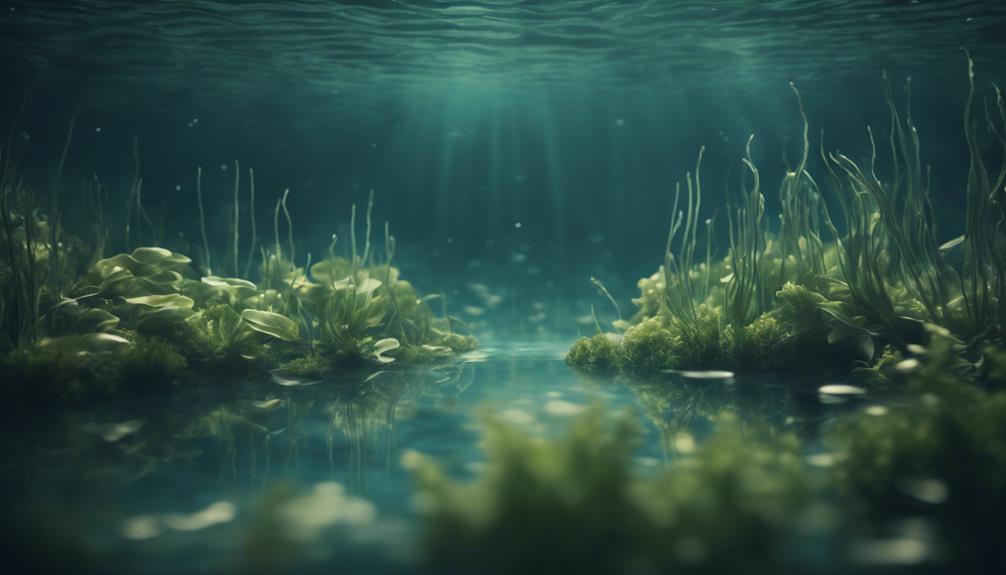
Optimize your pond's water depth and volume to create an environment that fosters clear, healthy water and supports the well-being of your aquatic life.
When it comes to pond depth, you'll want to aim for a minimum of 18 inches to prevent fish from stirring up debris and sediment, leading to clearer water.
On the other hand, a maximum depth of 4-6 feet can help prevent stratification, where warm and cold water layers don't mix, leading to poor water quality.
Minimum depth: 18 inches to prevent fish from stirring up debris and sediment.
Maximum depth: 4-6 feet to prevent stratification and poor water quality.
Minimum volume: 1,000 gallons to provide a stable environment for fish and plants.
Surface area: at least 100 square feet to provide adequate space for aquatic plants to grow and absorb excess nutrients.
Creating a Balanced Ecosystem
As you work to create a balanced ecosystem in your pond, you'll want to focus on establishing healthy bacteria populations and ideal water flow.
You'll need to contemplate how to promote the growth of beneficial microorganisms, which are essential for breaking down waste and maintaining water quality.
Healthy Bacteria Thrive Here
In a balanced ecosystem, beneficial microorganisms flourish in the water column and on substrate surfaces, playing a crucial role in decomposing organic matter and recycling nutrients.
As you work to create a harmonious environment in your pond, you're giving healthy bacteria the opportunity to thrive.
These microorganisms are essential for breaking down waste and excess nutrients, keeping your water clean and clear.
Healthy bacteria are necessary for:
Efficient waste decomposition: Healthy bacteria quickly break down organic matter, reducing the risk of toxic buildup.
Improved water clarity: As bacteria consume excess nutrients, your water becomes clearer and more transparent.
Reduced algae growth: With healthy bacteria present, algae have fewer opportunities to grow and bloom.
Increased oxygen levels: Healthy bacteria help to increase oxygen in the pond, supporting a thriving ecosystem.
Optimal Water Flow Matters
You'll want to make certain that water circulates effectively throughout your pond, because poor water flow can stagnate your ecosystem and undermine the benefits of healthy bacteria. Effective water flow matters, and creating a balanced ecosystem requires a well-designed system. A high flow rate helps to distribute oxygen and nutrients evenly, promoting a thriving environment for your aquatic life.
Here's a breakdown of the importance of effective water flow:
| Water Flow Rate | Effect on Ecosystem |
|---|---|
| Low (less than 10 gallons per minute) | Stagnation, low oxygen levels, and poor water quality |
| Medium (10-20 gallons per minute) | Moderate water quality, some oxygenation, but still prone to stagnation |
| High (20-30 gallons per minute) | Ideal for achieving superior water quality, high oxygen levels, and thriving aquatic life |
| Very High (more than 30 gallons per minute) | Excellent water quality, high oxygen levels, and exceptional ecosystem health |
| Variable | Unpredictable water quality, potential for stagnation and oxygen fluctuations |
Reducing Maintenance and Costs
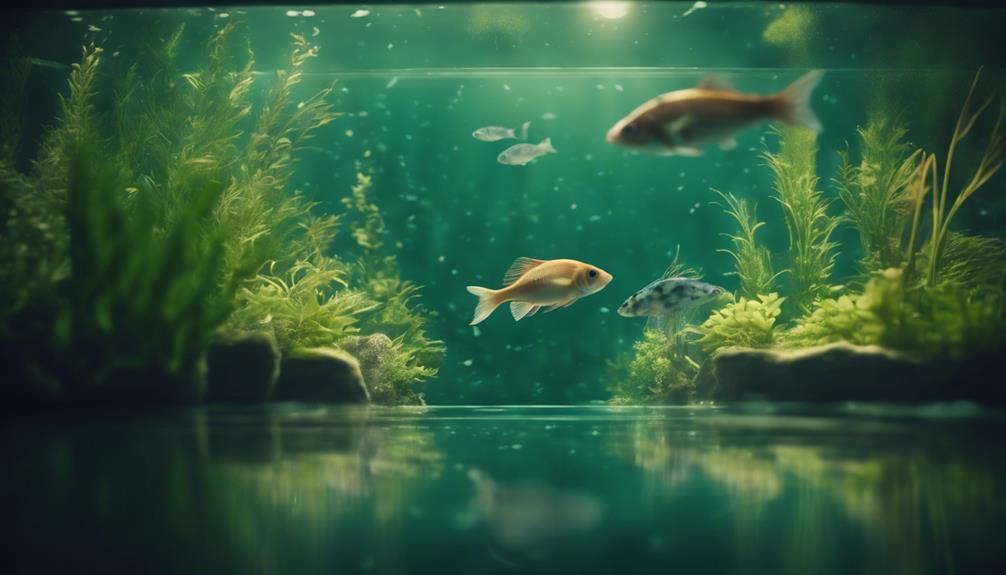
How can you achieve a significant reduction in maintenance and costs while still keeping your pond's water crystal clear? The answer lies in proper circulation.
By circulating your pond's water with a clear purpose, you can reduce costs by using a smaller, more efficient pump.
Proper circulation guarantees constant water motion and filtration, allowing your pond to practically look after itself.
Four benefits you'll experience when you prioritize circulation in your pond maintenance:
- Reduced maintenance requirements: Proper circulation promotes constant water motion and filtration, allowing your pond to practically look after itself.
- Lower costs: A well-circulated pond requires less time and money to maintain, as it reduces the buildup of harmful chemicals and pollutants.
- Fewer water changes: By removing old, dirty water and processing it through beneficial bacteria, proper circulation can return clean water to the pond, reducing the need for frequent water changes.
- Optimal biological filter performance: Proper circulation facilitates the optimal functioning of your biological filter, allowing beneficial bacteria and microorganisms to thrive.
Monitoring Water Quality Parameters
Regular monitoring of water quality parameters is essential to maintaining a healthy and thriving pond ecosystem, as it enables you to identify potential issues before they become major problems.
By regularly testing your pond water, you'll be able to detect any changes in ammonia, nitrite, and nitrate levels, which can harm your fish if left unchecked. You should also keep a close eye on pH levels, as sudden changes can be detrimental to both fish and plant health. Ideally, your pond's pH should range from 6.5 to 8.5.
Additionally, performing regular water changes is necessary, as it helps maintain a healthy and balanced ecosystem. You should aim to change 10-20% of your pond water weekly or 50% every 2-3 weeks.
Don't forget to test for phosphate levels, as excessive amounts can contribute to algae growth.
Finally, monitoring water temperature is essential, as fish and plants have ideal temperature ranges, and sudden changes can be stressful or even fatal.
Frequently Asked Questions
How to Circulate Pool Water Better?
To circulate pool water better, you'll want to optimize your pool pumps' performance by adjusting their speed and direction to increase water flow, ensuring a consistent turnover rate and efficient distribution of sanitizer and heat.
What Is the Best Way to Circulate Water in a Pond?
Imagine a serene pond, its waters flowing like a gentle stream. To achieve this, you'll want to install pond pumps and incorporate water features, like fountains or cascades, to create circulation and oxygenate the water, ensuring a healthy ecosystem.
How Do You Circulate the Water in a Hot Tub?
You circulate water in a hot tub by using a combination of pumps and Water Jets to create a continuous flow, with Hot Tub Filters ensuring cleanliness, and regular maintenance to prevent algae growth and maintain clarity.
How Do I Make My Pond Water Crystal Clear?
To achieve crystal-clear pond water, you'll need to implement a multi-faceted approach, including regular water testing to monitor nutrient levels, algae control measures like UV sterilizers, and optimizing circulation to prevent stagnation and promote healthy aquatic life.
Conclusion
As you cast your gaze upon your pond's tranquil surface, remember that beneath the calm lies a complex dance of water and life.
By mastering the art of circulation, you've orchestrated a symphony of oxygen, nutrients, and waste removal, creating a harmonious balance that resonates throughout your entire ecosystem.
With every ripple, your pond's clarity and health will flourish, reflecting the beauty and serenity you've carefully crafted.

